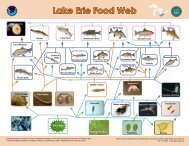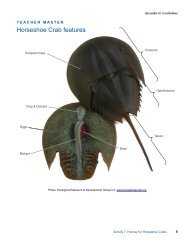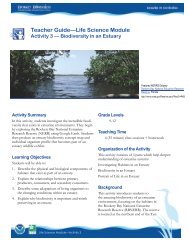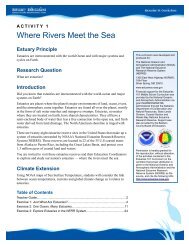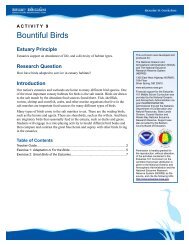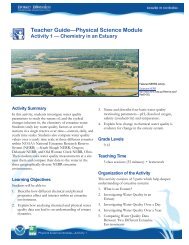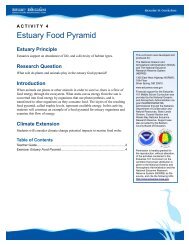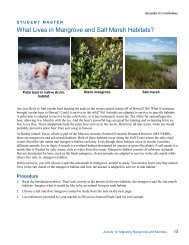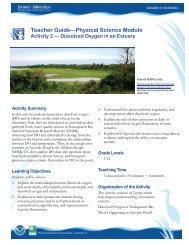The Great Oyster Mystery Teacher Guide - Estuaries NOAA
The Great Oyster Mystery Teacher Guide - Estuaries NOAA
The Great Oyster Mystery Teacher Guide - Estuaries NOAA
You also want an ePaper? Increase the reach of your titles
YUMPU automatically turns print PDFs into web optimized ePapers that Google loves.
S T U D E N T M A S T E RClues in the Numbers<strong>Oyster</strong>s are a valuable part of estuary ecosystems. <strong>The</strong>y help purify the water and control erosion. <strong>Oyster</strong> reefsprovide habitat for numerous other species. However, oysters can also be an “indicator species.” Like a canary in acoal mine, oyster health and oyster abundance can tell us about changing conditions in an estuary.A few years ago, something odd happened to the oysters in Mission-Aransas Estuary in south Texas, a valuableoyster-growing area. In the first half of 2007, young oyster populations within the estuary’s Copano Bay and AransasBay were normal. But then, the numbers of young oysters mysteriously decreased, only to dramatically increase againthe next year. To Dr. Jennifer Pollack, an oyster researcher at Texas A&M University, this was a real mystery. Nowyou can look at some of the data researchers used to solve the great oyster mystery.Activity 11: <strong>The</strong> <strong>Great</strong> <strong>Oyster</strong> <strong>Mystery</strong> 7



